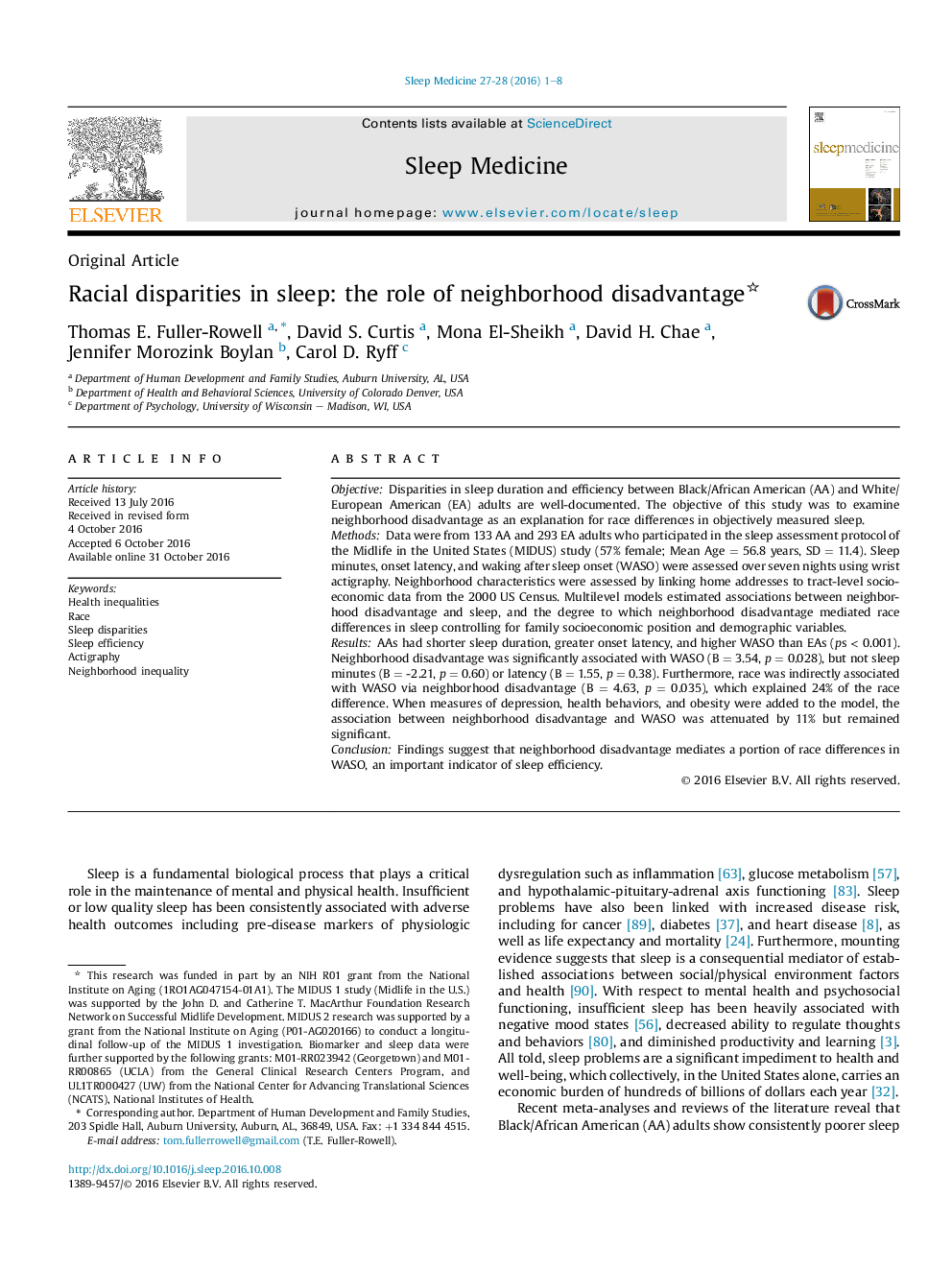| کد مقاله | کد نشریه | سال انتشار | مقاله انگلیسی | نسخه تمام متن |
|---|---|---|---|---|
| 5643898 | 1586481 | 2016 | 8 صفحه PDF | دانلود رایگان |
- Racial disparities in sleep latency, duration, and efficiency were evident.
- Neighborhood disadvantage predicted waking after sleep onset (WASO).
- Neighborhood disadvantage accounted for 24% of race differences in WASO.
- Addressing neighborhood inequities may be key to reducing sleep disparities.
ObjectiveDisparities in sleep duration and efficiency between Black/African American (AA) and White/European American (EA) adults are well-documented. The objective of this study was to examine neighborhood disadvantage as an explanation for race differences in objectively measured sleep.MethodsData were from 133 AA and 293 EA adults who participated in the sleep assessment protocol of the Midlife in the United States (MIDUS) study (57% female; Mean Age = 56.8 years, SD = 11.4). Sleep minutes, onset latency, and waking after sleep onset (WASO) were assessed over seven nights using wrist actigraphy. Neighborhood characteristics were assessed by linking home addresses to tract-level socioeconomic data from the 2000 US Census. Multilevel models estimated associations between neighborhood disadvantage and sleep, and the degree to which neighborhood disadvantage mediated race differences in sleep controlling for family socioeconomic position and demographic variables.ResultsAAs had shorter sleep duration, greater onset latency, and higher WASO than EAs (ps < 0.001). Neighborhood disadvantage was significantly associated with WASO (B = 3.54, p = 0.028), but not sleep minutes (B = -2.21, p = 0.60) or latency (B = 1.55, p = 0.38). Furthermore, race was indirectly associated with WASO via neighborhood disadvantage (B = 4.63, p = 0.035), which explained 24% of the race difference. When measures of depression, health behaviors, and obesity were added to the model, the association between neighborhood disadvantage and WASO was attenuated by 11% but remained significant.ConclusionFindings suggest that neighborhood disadvantage mediates a portion of race differences in WASO, an important indicator of sleep efficiency.
Journal: Sleep Medicine - Volumes 27â28, NovemberâDecember 2016, Pages 1-8
